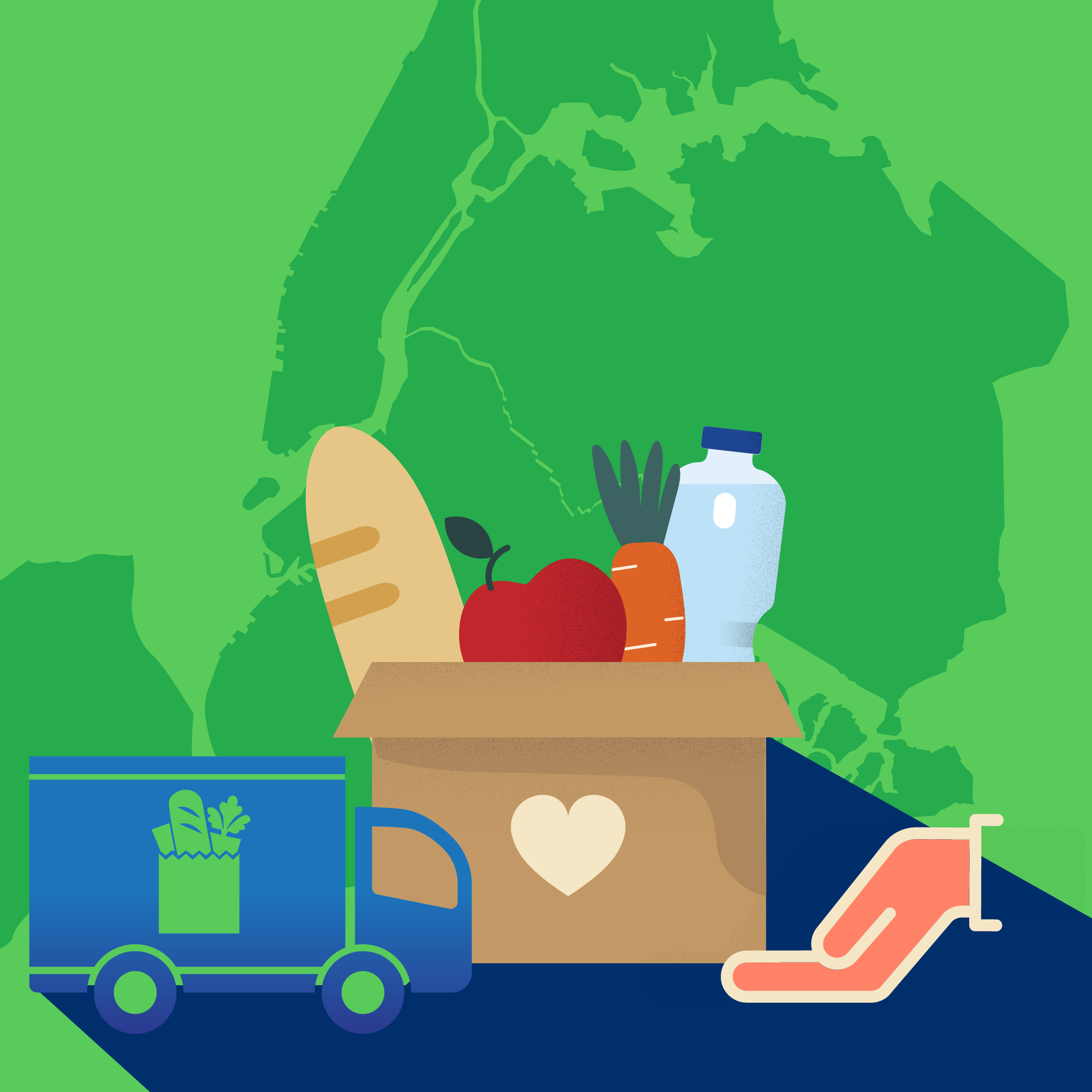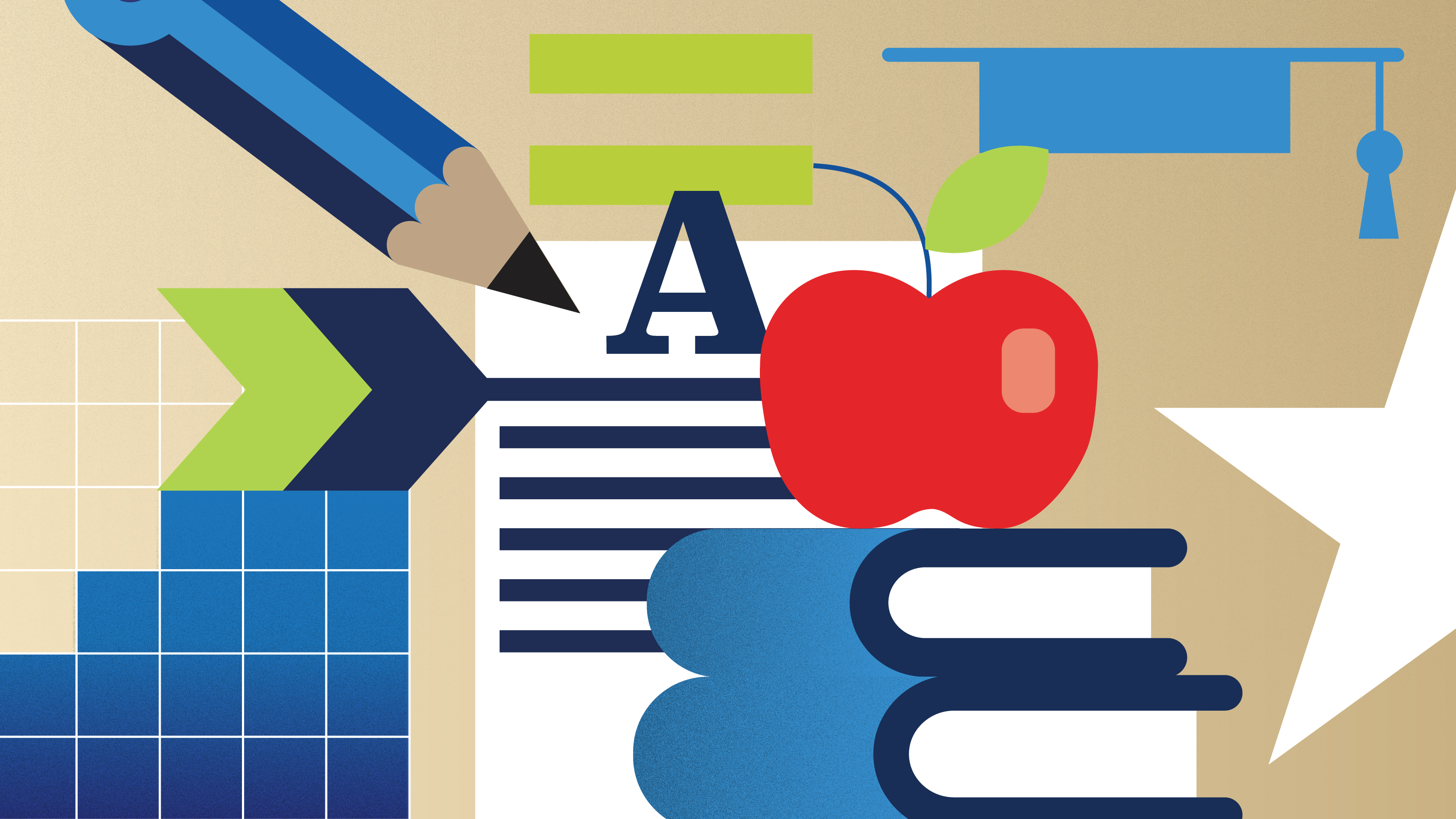Nov 18, 2024 Press Release
Robin Hood Poverty Tracker Finds One in Three New Yorkers Have Used a Food Pantry Over a Three-year Period Following the Pandemic
Year-over-year pantry use remains twice as high compared to before the pandemic. As pantry use grows, citywide food hardship holds steady: one in three adult New Yorkers and 44% of families with children experienced food hardship in 2023.
NEW YORK – Today, Robin Hood, in collaboration with Columbia University’s Center on Poverty and Social Policy and its Population Research Center, released its annual food insecurity report, Poverty Tracker Spotlight on Food Assistance from New York City’s Pantry System. The report shows that one in three adults (31%) and nearly half of families with children (44%) experienced food hardship in 2023, a rate that remains consistent with the previous year’s study. The report defines food hardship as sometimes or often running out of food, or a person worrying that they will. Amid these challenges, 230 million pounds of emergency food were distributed across New York City’s five boroughs in 2023, according to a City Harvest analysis of data from FeedNYC.
The 2024 Poverty Tracker spotlight report examines food pantry use before and since the COVID-19 pandemic, covering 2015 to 2023. It finds that pantry use among families with children tripled at the height of the pandemic in 2020, and today, utilization rates remain twice its pre-pandemic level, at 18% in 2023 compared to 9% in 2019. Over this same period, pantry use among employed New Yorkers also soared, more than tripling in 2020 and remaining twice as high in 2023 at 11% compared to 2019, when it stood at 5%.
“As the city’s affordability crisis deepens, more New Yorkers, including workers and parents, are forced to make impossible choices between food, housing, and other essentials,” said Richard R. Buery, Jr., CEO of Robin Hood, New York City’s largest local poverty-fighting philanthropy. “This year’s spotlight on food assistance is a sobering reflection of a city where half the population either lives in poverty or is one missed paycheck away from it. The data is a clear call for stabilizing supports like cash assistance, wage increases, and eligibility reforms to SNAP, all to better ensure New Yorkers most in need are adequately fed.”
The findings underscore that since the pandemic, food pantries serve a broader range of New Yorkers than before, including many of those actively engaged in the workforce. For many, pantries help to supplement inadequate earnings and manage difficulties affording the cost of living in the city. Data from City Harvest, a major emergency food provider in the city, reveals that 87% of program beneficiaries surveyed say pantries help them manage their budget and save on weekly grocery bills.
“This report underscores what we see and regularly hear from our partners and the people that we serve: High costs for food, child care, and housing make it increasingly difficult for New Yorkers to put food on their tables,” said Jilly Stephens, CEO of City Harvest. “The report reveals that a majority of people who visit food pantries have jobs, an indication that wages cannot keep up with the high cost of living in New York City. Consequently, City Harvest’s partner soup kitchens and food pantries are seeing one million more visits each month than before the pandemic, as more of our neighbors seek out free, nutritious food in order to make ends meet.”
Additional Findings from Robin Hood and Columbia Spotlight on Food Pantry Use:
- A smaller share of pantry users received SNAP benefits since the onset of the pandemic: The report shows that the population of pantry users has increased and diversified since 2019, including New Yorkers who may not be eligible for SNAP or choose not to apply for benefits. As a result, the percentage of pantry users receiving food assistance benefits, like SNAP, dropped from 66% of pantry users receiving SNAP benefits pre-pandemic to 44% in the years since.
- Greater Financial Setbacks and Rising Costs: Nearly three out of four pantry users (72%) reported experiencing financial shocks, such as job loss, income decrease, or unexpected expenses.
- Fewer Serious Health Challenges Reported: Compared to pre-pandemic figures, fewer pantry users report serious health challenges. Prior to the pandemic, 60% dealt with a serious health problem, such as being in poor health or experiencing a work-limiting health condition. Since the onset of the pandemic, that figure drops to 48%, underscoring that a diverse group of New Yorkers, including those in good health, turn to pantries in times of need.
“Some New Yorkers might think of using a pantry as reserved for a crisis or an emergency, but the Poverty Tracker data highlight that a broad and diverse segment of the city accesses the pantry system at one time or another. The city’s pantry system is a vital part of the safety net, and it’s been helping nearly a third of the city’s population provide food for their families and cope with the city’s high cost of living,” said Christopher Wimer, Director of the Center on Poverty and Social Policy at the Columbia University School of Social Work.
Policy decisions at the federal and state level could determine whether pantry use eventually returns to its pre-pandemic levels. One of the most important food-related pieces of legislation is the Farm Bill, which determines and reauthorizes spending on SNAP. However, the election results will likely impact whether Congress decides to vote on a new Farm Bill during the lame duck-session.
Policymakers looking to reduce food insecurity should prioritize reauthorizing the Farm Bill immediately and should ensure the new bill increases SNAP benefits to better help families meet the costs of an adequate food budget. New York State policymakers should improve and expand state-level outreach and education efforts about SNAP and other food assistance programs and create programs for those New Yorkers ineligible for SNAP. Additionally, lawmakers should prioritize the expansion of the federal Child Tax Credit, Empire State Child Tax Credit, and Earned Income Tax Credit to help families afford food.
Since 2012, the Poverty Tracker has surveyed a representative sample of 3,000 New York households every three to four months, providing critical information on the dynamics of poverty and other forms of disadvantage in the city while tracking data on employment, assets and debts, and health. The Poverty Tracker has monitored the impacts that COVID-19 and the related economic downturn have had on life in New York City since the onset of the pandemic.
Last year, Robin Hood funded emergency food providers across all five boroughs that distributed over 32 million pounds of food to 337,000 New Yorkers facing food insecurity. Since 1988, Robin Hood funding has provided 82 million meals to New Yorkers in need.
###
About Robin Hood:
We are NYC’s largest local poverty-fighting philanthropy and since 1988, we have invested nearly $3 billion to elevate and fuel New Yorkers’ permanent escapes from poverty. In 2023, through grantmaking with 250+ community partners, we created pathways to opportunities out of poverty through our strategic partnerships on child care, child poverty, jobs, living wages and more. We are scaling impact at a population level for the nearly 2 million New Yorkers living in poverty. At Robin Hood, we believe your starting point in life should not define where you end up. To learn more about our work and impact, follow us on X @RobinHoodNYC or go to robinhood.org.
MEDIA CONTACT
Crystal Cooper, Deputy Director of Communications, Robin Hood
press@robinhood.org




